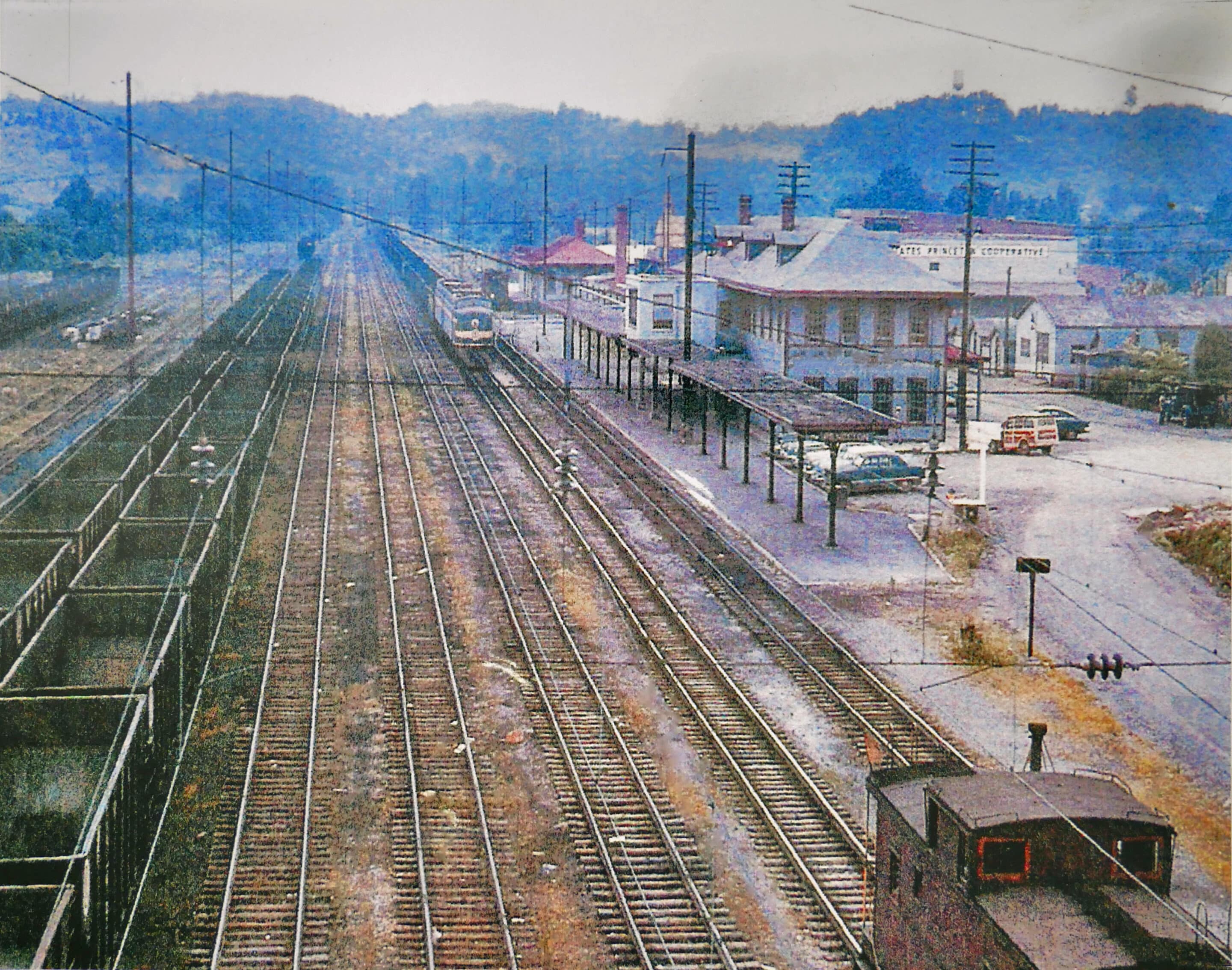Opportunity at Work at the Crossroads of Southern West Virginia—this slogan was used to describe Princeton during the mid and late twentieth century. It depicted a community poised to grow as a result of its unique positioning within the mountain state. The opportunity Princeton has and presumably will always be its access to infrastructure and transportation. This opportunity has shaped the town throughout the whole history of Princeton. A great many cities in West Virginia were the product of coal; Princeton was not. Rather than being a black diamond city, Princeton’s first sign of true growth originated from rail.
Princeton did not incorporate before the Virginian railway was built in 1909, it was nothing more than a small township; however, it is worth noting that the town was the site of a Civil War conflict in 1863 which resulted in Confederate soldiers burning the town to prevent residents from giving aid to union soldiers. The only two buildings that survived the fire were the McNutt Home on North Walker Street and the Aspenwold on Douglas Street. Union soldiers aided in these two buildings surviving the blaze. Among them, Lt. Col. Rutherford B. Hayes (later the 19th President of the United States), who is documented as describing the area as a beautiful and romantic setting.
The years in the history of Princeton between the Civil War and the construction of the railway were unfortunate for the small township. Of the remaining residents, many were identified as Confederate sympathizers and could not vote nor participate in public affairs until 1870; thus, residents did not have proper representation in Charleston. This nearly cost them the County seat three years earlier to the neighboring Town of Athens. Population growth in the area was static until 1909.
Henry Rogers, a Standard Oil Empire executive, was the individual responsible for the construction of the railway through Princeton. He aimed to build a line of rail that was able to transport equipment and goods throughout the Appalachian Region. While retaining his position as the Vice President of Standard Oil, Rogers quietly invested more than $40 million ($83-5 million in today’s money) into the construction of the Virginian. The undertaking that stretched from Deepwater, West Virginia, to Sewalls Point, Virginia, was completed shortly after Roger’s passing in April 1909. The Virginian was the catalyst that made Princeton viable for growth and expansion.
Instead of able-bodied Mercer Countians moving to Bluefield or neighboring communities for gainful employment, the Virginian created opportunities that kept Princeton residents within the town while simultaneously drawing new ones in. The Princeton Railcar Shops along the City’s designated rail stop employed as many as one-thousand workers by 1924; in addition, complimentary industries such as service and retail began to open their doors in town.


By 1927, Princeton had sixty stores, three banks, four hotels, two hospitals, two wholesale houses, two printing firms, five drug stores, a hosiery mill, two ax handle factories, two flour mills, two brick plants, an iron foundry, two planing mills, a cabinet shop, an ice plant, a bottling plant, and a bakery.
The merger of the Virginian and Norfolk & Western railroads in 1959 had drastic reversal effects on the area’s economy. They were partially offset by the job opportunities at industrial plants located in Princeton in the 1960s, particularly the North American Aviation Company, Inc. (later Rockwell International), which opened in 1965. It closed in the late 1970s.
Growth was expanded on with the coal boom of the early twentieth century. As more coal was mined, the railway saw more traffic in the form of both commercial and passenger trains. The infrastructure of the town grew accordingly with some additions, including the Princeton Municipal Airport, the Virginian Hotel, and the Princeton Scape-Yard.
By 1974, the footprint of the City would resemble, in part, what it is today. Mercer, Rogers, and Thorn Streets became thriving commercial hubs. Additionally, flooding concerns along Stafford Drive were mitigated with the City limits shifting to include thoroughfares that would be considered modern-day Princeton. Construction on Interstate 77, Highway 460, and the West Virginia Turnpike was completed by this time, which mitigated losses that the community felt from a declining rail industry and opened up the City to greater accessibility. Seemingly overnight, Princeton became accessible to a third of the United States population in less than a day’s drive.
Going into the twenty-first century, a revitalization began to take place in Princeton that sprouted from arts and culture. Vacant storefronts and properties were repurposed primarily by industrious third parties to create a vibrant community. One of the first signs of change in the downtown’s scenery was when the City converted an empty lot on Mercer Street into Dick Copeland Town Square-later adding an “in honor of all veterans” war memorial in 2002. Thereafter, the Charles T. “Chuck” Mathena Center opened in 2007 which gave a venue for creators and performers alike to share their talents with residents.
Princeton has continued this trend to grow into a friendly community with new opportunities and a thriving small business culture that is ready to welcome you.
